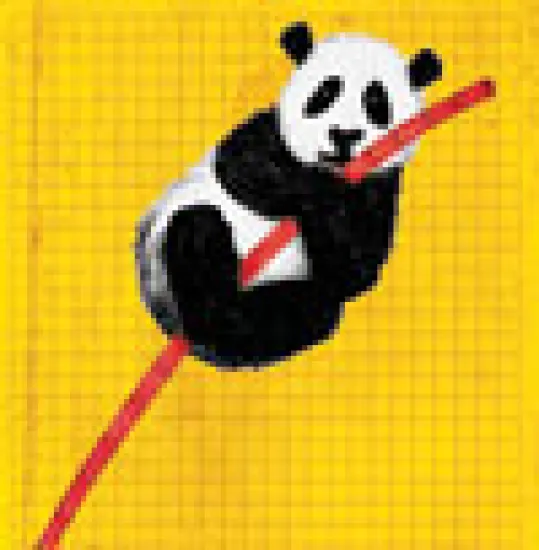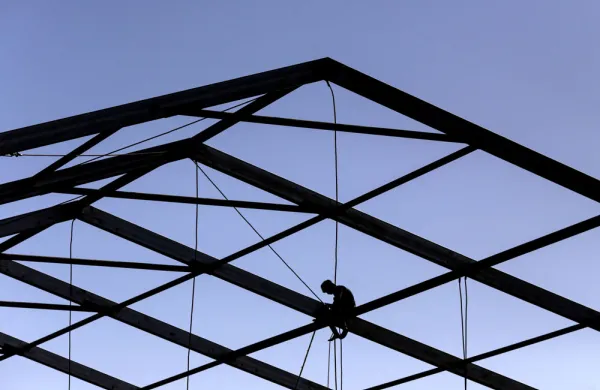So far, China has proved to be remarkably resilient in the face of America’s Great Recession. Doomsayers predicted that its economy would collapse as U.S. imports contracted, yet it continues to expand rapidly.
Even the World Bank now expects growth in China’s real gross domestic product this year to be within a whisker of Beijing’s official target of 8 percent. The Shanghai stock market has exploded, and the country’s appetite for raw materials is rekindling speculative fervor for commodities. The nation’s giant, 4 trillion yuan ($585 billion) stimulus package is boosting car and home sales and encouraging hopes that consumer demand will drive future economic expansion.
Still, doubts persist. Because it is based on rampant credit growth and fails to address deep structural flaws in the economy, China’s resurgence may be vulnerable to weaknesses similar to those demonstrated by the U.S. during the recovery that Alan Greenspan engineered after the technology sector bust.
“The bullish group-think on China is just as vulnerable to massive disappointment as any other extreme of bubble nonsense I’ve seen over the last two decades,” Albert Edwards, a global strategist at Société Générale, wrote in a note to clients in June. Edwards points out that electricity output — one of the few pieces of reliable macroeconomic data to come out of the country — has been declining. Industrial profits and exports are also contracting sharply.
The key question surrounding China’s future prosperity is whether the country can wean itself from its dependence on exports and on massive investment growth. Yasheng Huang, an economics professor at the Massachusetts Institute of Technology’s Sloan School of Management and author of Capitalism with Chinese Characteristics, dismisses the notion that rising domestic consumption can offset declining exports. During the past two decades, Beijing’s economic policies have deliberately discouraged small businesses in rural areas, according to Huang. “In the 1990s foreign direct investment, national champions, massive infrastructure developments and urban renewal were elevated to the top of the economic policy agenda,” he writes.
The nation’s rapid growth appears to testify to the success of Beijing’s policy. Impressive new airports in Shanghai and Beijing and the construction of numerous splendid office buildings in both cities provide visual confirmation of China’s arrival as an economic superpower.
But appearances can be deceptive, notes Huang. Much of the economy is still controlled by the state. Although the investment share of GDP has approached 50 percent in recent years, the role of the private sector has contracted. State-owned enterprises receive the bulk of bank credit at the expense of small businesses, which are forced to borrow (at usurious rates) outside the official banking system. Foreign investors benefit from tax cuts that give them an advantage over indigenous entrepreneurs.
This policy of suppressing private businesses in favor of state-controlled national champions and foreign exporters has had profound consequences. In recent years, China’s 500 million rural workers (two thirds of the total workforce) have watched their income share of GDP drop below 50 percent, whereas households in Shanghai and other cities have seen their pay go up, Huang has found. Income inequality in China has climbed to Latin American levels. Education and health services in rural areas have been squeezed to pay for such expensive infrastructure projects as Shanghai’s 300-miles-per-hour Maglev train.
In Huang’s view, Shanghai is a Potemkin village: Vastly impressive to foreigners, its gleaming modernity deflects attention from the backwardness of the countryside, where the bulk of the population lives and works. Rural illiteracy has climbed as resources have been diverted to urban development. Excessive spending on infrastructure, combined with restrictions on the private sector, has contributed to a decline in China’s productivity, according to Huang.
Although GDP data point to a high Chinese savings rate, Huang suggests that much of the saving has been done by the government, which achieved large budget surpluses in the boom years. Household savings are largely concentrated in the richest section of the population. The discouragement of small-scale businesses, poor rural income growth and low savings among most of the population — half of whom earn less than $2 a day — all speak against the notion that China can switch rapidly from an export- and investment-driven growth model to one based on expanding consumer demand.
Where does the stimulus plan figure in all this? Chinese auto sales, after all, climbed by 9 percent in May, boosted by tax cuts. Subsidies to rural consumers have spurred sales of household appliances. Overall retail sales were up 15 percent for the same month. However, as China watchers know only too well, such macro data can be misleading. Government purchases account for a substantial part of “retail” sales. Value-added tax receipts have diverged from sales figures, suggesting that the government has been playing a large role in generating consumption.
Far from shifting China’s economic growth onto a new flight path, the stimulus package is exacerbating chronic industrial overcapacity, asserts Michael Pettis, a professor of finance at Beijing University’s Guanghua School of Management. “The massive expansion of credit and investment,” Pettis writes in his irreverent blog, China Financial Markets (mpettis.com), “is simply more of the same set of policies which have pushed China ever deeper into the Asian development model,” a model that involves channeling subsidized capital into investment and export-oriented manufacturing capacity.
Bank loans, which surged by an incredible 15 percent in the first quarter of this year, are largely going to state-owned enterprises to boost investment. Even such sectors as shipbuilding and steel production, which suffer from overcapacity, are receiving fresh investment capital. In a repeat of U.S. president Herbert Hoover’s misbegotten policies at the onset of the Great Depression, Chinese companies are being instructed not to lay off workers. Most of the stimulus money will be spent on infrastructure that, as Huang points out, is already excessive. Pettis fears that long-term consumption growth could be suppressed if loans turn sour and the government is forced to bail out the banking system.
This year, Beijing has shown that it can pull the levers to generate rapid economic growth in a fashion that Western policymakers can only envy. However, as Pettis points out, the Chinese economy remains dependent on exports and the trade surplus continues to rise. The giant stimulus, in his view, is a massive “gamble on the duration of the global slowdown.” Unless the worldwide economy picks up shortly, Beijing may well find that all its vast infrastructure spending has achieved is to dig the Chinese economy into an even deeper hole.
Edward Chancellor is the author of Devil Take the Hindmost and a senior member of GMO’s asset allocation team.






